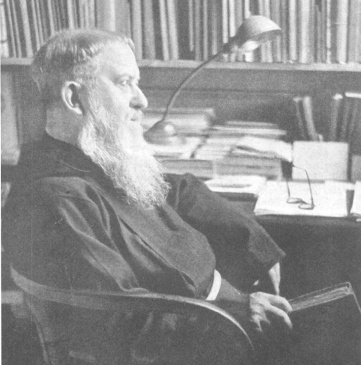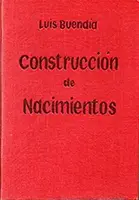 Popular or Artistic Nativity Scenes? A Classification Worth Rethinking
Popular or Artistic Nativity Scenes? A Classification Worth Rethinking
The posts are like a series:
iif you miss the first chapter or skip the order, you’ll lose the thread 🧵
The Nativity Scene: An Artistic Expression in All Its Forms
If there’s one thing that defines nativity scene making, it’s its great diversity. From small family crèches made with natural materials to elaborate compositions with perspective and lighting effects, all these creations share one thing in common: they are Art.
This debate is nothing new. It has also happened with photography, and even today it's still an open question. Is it art or not? Let’s see how it’s framed in another context:
Photography is recognized as an art form, but that doesn’t mean every photograph is automatically a work of art. The difference lies in the intention and execution behind the image.
For a photograph to be considered art, it must reflect a personal vision, convey an emotion, an idea, or a message, and show careful composition and technique. As Adobe notes, artistic photography stands out because it seeks to express something beyond simply depicting reality.
By contrast, many everyday photos—casual snapshots, images with no clear artistic intent—may lack the elements that make them art. However, they still hold value in other contexts, such as documentary, personal, or informational use.
In short, not all photography is art; what makes it a work of art is the creator’s intention and the way they handle composition, technique, and the ability to evoke a response in the viewer.
Now, think about your nativity scene.
Do you build it without any intention?
Do you not care how it looks?
Do you just scatter the figures on a surface and say, “Here’s my nativity for this year!”?
If the answer is No, then intention is there. And that’s where the real difference begins.
Nativity Scene Making: A Creation from Scratch
Just like a blank canvas for a painter, an empty staff for a composer, or a blank page for a poet, nativity scene making begins from nothing. It’s not just about placing figures on a surface, like setting the table on Christmas Eve, but about building a universe, about shaping a scene with intention and meaning.
Each nativity creator brings their own personal vision to the work, seeking to convey an emotion, an idea, or a message. This intention is what brings it closer to art.
Sometimes, what may be missing are the elements of traditional art such as careful composition and technique. But that doesn’t mean nativity scene making cannot reach a high artistic level. As with any discipline, there are more elaborate creations and more spontaneous ones, but the essence remains the same: the will to give life to a meaningful representation.
Whether you succeed or not is another story — that depends on you, not on nativity scene making itself.
Over time, however, a classification has emerged that distinguishes between popular nativity scenes and artistic nativity scenes, as if one had creative value and the other did not. As we’ve already seen, just because something is popular doesn’t mean it’s not art. Throughout history, many artistic expressions we admire today began as popular forms: Gothic art, Greek pottery, Baroque altarpieces, or even folk music.
Nativity scene making is no exception. Its deep roots in culture and devotion have made it accessible and close to people, but that does not diminish its artistic value. On the contrary: its emotional power, technical mastery, and symbolic strength are precisely what make it a fully legitimate artistic expression.
That’s why, instead of dividing nativity scenes into arbitrary categories, it makes more sense to distinguish them by how they are presented to the viewer and the intention behind their creation. The latter opens up a new perspective that will be explored later on.
The first book to address the construction of nativity scenes is the Manual del pessebrista (Barcelona: Franciscana, 1927). In this work, no specific classification is made, as the author always refers to the nativity scene as an artistic expression without making distinctions. The categorization of nativity scenes seems to be linked to the introduction of plaster as a construction material, a technique that began to be used in 1912.

His determined and committed nature led him to promote the founding of the Nativity Scene Association of Tarragona in 1925.
In the book Com es pot construir un pessebre by Josep Maria Puig i Roig (Editorial Balmes, Barcelona, 1928), no nativity classification is mentioned either. To find the first documented reference to such categorization, we must go back to 1933, when it appears in print for the first time. Puig i Roig, J. M. (1933). La construcció dels pessebres: Recull d’orientacions pessebristes (pp. 27–28)
(Already cited in: Open vs. closed nativity scenes: two ways of representing the nativity)
Both sources present the same classification of nativity scenes, although with slight differences in approach.
- Buendía uses the terms "historical or biblical" and "popular".
- Friar Andreu of Palma uses "biblical" and "extra-biblical".
Despite this difference in terminology, the concept they describe is the same.
What matters is that both acknowledge that the nativity scene can be recreated with historical accuracy or with creative freedom, and that in both cases it can reach a high artistic value.
According to Amades, in the book El Pessebre, Les Belles Edicions, Barcelona, 1935
However, his classification of the nativity scene into ‘popular’ and ‘artistic’ reflects a view of his time that, over the years, has become outdated.
This sculptural tribute does not seek to reaffirm that distinction, but rather to honor the importance of his work and the impact he had on ethnography. Amades not only documented customs and legends, but also helped preserve the soul of a people.
This sculpture is a gesture of respect and recognition. It may be the first ever dedicated to him, and through it I wish to highlight not only his work, but also the importance of continuing to revisit and update our understanding of art and tradition.
Artistic Nativity Scene: Created by individuals with artistic knowledge and an academic approach to composition and history.
Popular Nativity Scene: Made by individuals without formal art training, following tradition with more intuition than technical rigor.
It is important to consider the historical context in which this classification was formulated. In 1935, the study of art and folk traditions was still carried out under historicist and academicist criteria, where artistic recognition was given only to academically trained works. However, in the 21st century, these criteria have changed radically. The boundaries between academic and folk art have been challenged by historians and art theorists, and today it is recognized that artistic value lies not only in technique but also in cultural impact, expressive power, and innovation in visual language.
This classification was adopted at the International Nativity Scene Congress of 1955 and has been replicated over time without critical analysis. Spanish Wikipedia appears to have taken it as a reference without updating or contextualizing it, ignoring changes in how we understand art and folk culture.
🗫Does it still make sense to use this classification today?
The major flaw in this distinction lies in its outdated concept of art, in which only works produced by academically trained individuals are considered truly artistic.
- Art is not defined by who creates it, but by its ability to convey emotion and meaning.
- It's not a matter of technique or materials. Following this logic, a child's drawing could not be considered art (remember Dürer’s drawing at age 13?), naïve art would have no value, and conceptual works like Duchamp’s Urinal wouldn’t count as art.
- Classifying nativity scenes this way is elitist and wrong. A nativity scene, whether made of moss and cork or carved extruded polystyrene, is still an act of artistic creation.
If we applied this logic to the history of art, we would have to say that Giotto's frescoes are not art because their perspective is rudimentary, or that a sketch by Leonardo da Vinci or a print by Goya has less artistic value because it is done on paper rather than finished in oil paint.
Any classification must be reviewed and analyzed in its historical context. What might have made sense in 1935 does not necessarily make sense today; 90 years have passed since then. The division between popular and artistic nativity scenes is not only outdated but also perpetuates an artificial hierarchy within nativity art. It’s time to rethink it with a broader, more up-to-date perspective.


